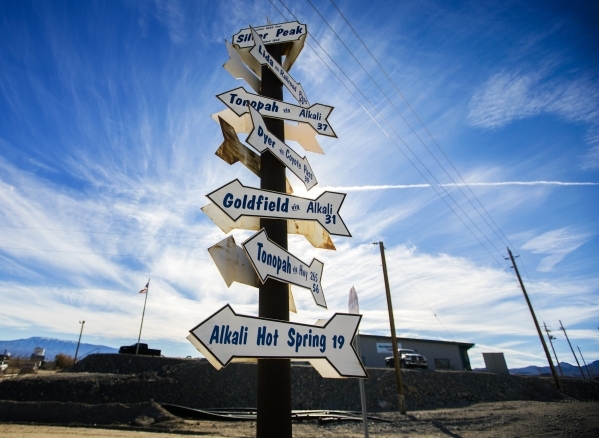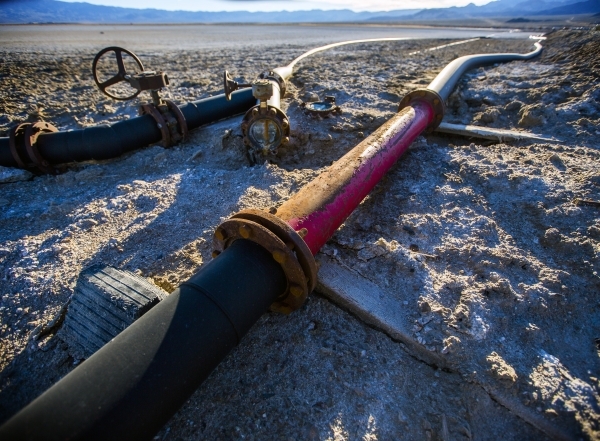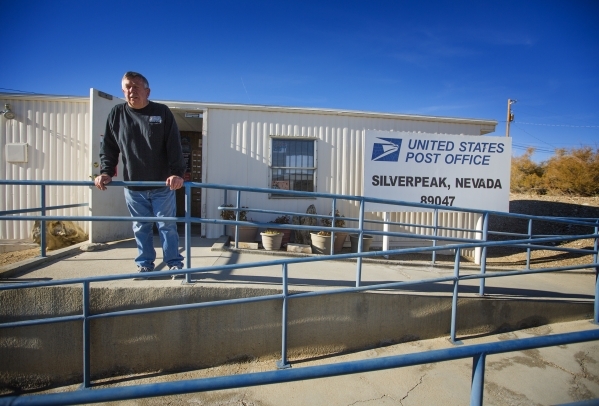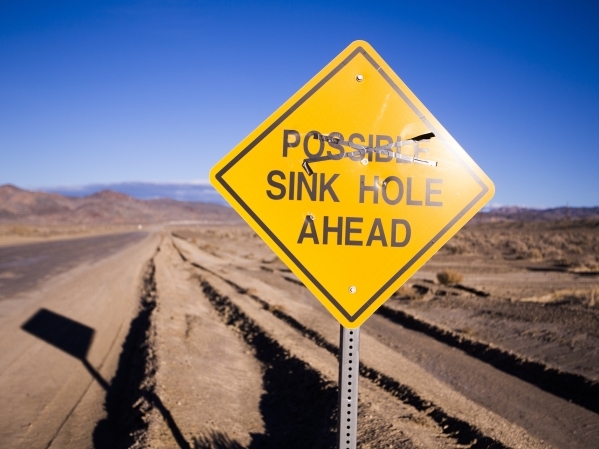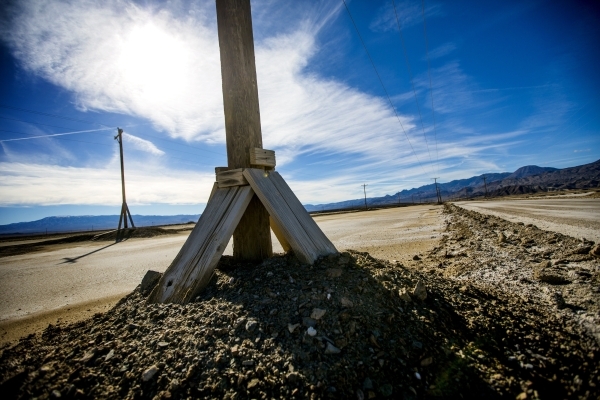There’s lithium in them thar … lakebeds
CARSON CITY — A new mining boom is taking shape in Nevada, one focused not on gold and silver but brines and clay containing an element critical to a 21st century world.
Interest in Nevada's lithium supplies spiked after Tesla Motors Inc. chose the Northern Nevada desert as the site for its $5 billion lithium-ion battery factory, a joint venture with Japanese company Panasonic Corp.
Elon Musk, Tesla's billionaire CEO, said mass production of the batteries is key to his goal of making the company's fast and sexy electric cars affordable to the general public.
Since factory construction began last year, Musk has launched another endeavor — making energy storage units for homes and businesses capable of storing solar-produced electricity for use when the sun doesn't shine.
With Nevada having the only lithium-producing mine in the nation, interest in the Silver State's lithium riches are soaring. But whether the metal will prove to be a boon or bust remains to be seen.
What it is, why we need it
Lithium is the lightest and softest of all metals. At room temperature, it's a silvery-white color and can be cut with a knife. But in a pure state it is highly reactive to water and air — it is flammable and can even explode.
Cellphones, portable electronics and laptop computers all use rechargeable lithium batteries. It's also used in heat-resistant glass, ceramics, aircraft metals, lubrication grease, air treatment systems and pharmaceuticals.
But it is the buzz over Tesla and the emerging electric car market that is charging the demand for lithium. In 2013, rechargeable batteries accounted for 29 percent of lithium consumption, according to Stormcrow Capital, a Toronto-based research and consulting firm. By 2025, Stormcrow projects that percentage will jump to roughly half.
Global supply of lithium carbonate equivalent was estimated at 235,000 metric tons in 2014, with a demand of 181,000 tons.
"We would suggest that overall lithium demand will more than double from present levels through 2025," Stormcrow said in a May report on the industry, which also forecast demand might start outpacing supply by 2023.
That's not to say lithium is scarce. It's found in the earth's crust, oceans, mineral springs and igneous rocks. The trick is to find it in sufficient concentrations to be able to extract it economically.
Clayton Valley
In Nevada, you could say Clayton Valley for the moment is to lithium what the Carlin Trend is to gold.
Located in Esmeralda County southwest of Goldfield, Clayton Valley is home to Silver Peak Mine, the only operating lithium mine in the United States.
Last year it shipped more than 9.4 million pounds of lithium compound, or 4,715 tons, according to an annual report compiled by the Nevada Division of Minerals.
A 2013 report by the Nevada Bureau of Mines and Minerals said Silver Peak, now owned by Louisiana-based Albemarle Corp., reported its average annual production capacity to be 6,600 tons with an estimated mine life at that rate of 21 years.
Different kind of mining
Mention mining and most people think of hard rock ore. History buffs conjure images of crusty miners with picks and shovels seeking fortune on Nevada's famed Comstock Lode or other towns now long abandoned.
Though some lithium is mined from spodumene, a mineral that often occurs in large crystals, in Clayton Valley it's all about a salty, underground brine.
"In Clayton Valley, we're actually mining water," said Lisa Stillings with the U.S. Geological Survey. "When you find lithium in water, it's always a salty water solution."
Chile and Argentina are also big producers of lithium from brine.
The brine is pumped from underground and put in ponds. The water evaporates leaving behind lithium compounds.
Silver Peak
Silver Peak Mine, operating since the 1960s, is the granddaddy in Nevada lithium production, but some say its lifespan might be waning.
"As the mine runs out Albemarle could increase its imports of lithium intermediate chemicals and for use in Nevada final products," said Edward Anderson, a lithium consultant who is president and CEO of TRU Group.
Anderson said Albemarle could ship lithium compounds from its mining operations elsewhere for refining in Nevada. In September, Albemarle announced plans for a new production facility it hopes to have operational by 2020. The company said it is evaluating sites in the United States and Asia.
But lithium demand is also attracting other companies hoping to stake claims in the barren, windswept region of west-central Nevada.
Pure Energy Minerals headquartered in Vancouver, British Columbia, in September announced an agreement with Tesla to possibly provide lithium from another brine mine in Clayton Valley. The deal is contingent upon a forthcoming study on whether the project is technically and economically feasible.
Nevada Sunrise Gold Corp. in the fall also announced a letter of intent for an option to buy lithium claims near Silver Peak, while Ashburton Ventures Inc., a Canadian mineral exploration firm, said it acquired what it calls the "Elon" lithium claims in Clayton Valley. Others include Matica Enterprises and Dajin Resources Corp., both Canadian firms.
Enough soup underground?
Silver Peak officials declined requests for an interview. But Stillings said the company pumps from about a half-dozen different aquifers that takes timing and volume management to maximize production.
"It's really tricky because if they take too much water, pump too hard, they see the lithium concentrations drop," she said.
"It's just one big bathtub," she said of the valley, adding that it's unknown if the lithium-bearing aquifers are compartmentalized or somehow interconnected.
If they're linked, "too many straws" in the tub could diminish concentration levels, she said.
Kings Valley: Lithium mother lode?
Hundreds of miles north from Clayton Valley is Kings Valley, in Nevada's Humboldt County near the Oregon line. Western Lithium Corp. is banking on lithium-laden clay there as a new source of the element. Lithium has never been mined from clay before, but the deposit is calculated as among the fifth largest in the world.
"They have a lot of lithium in the ground but whether they can extract it is another story," Stillings said.
Western Lithium's mining claims encompass about 40,000 acres in Northern Nevada, said Jay Chmelauskas, president of the Vancouver-based company.
"We have invested a lot of time and money in our project in Nevada," Chmelauskas said. "The point of Nevada is, we didn't pick Nevada because we thought it was going to have a gigafactory. We picked Nevada because Mother Nature had deposited this very rich clay deposit."
The company has a demonstration plant in Germany, where clay from Nevada is crushed and pulverized. It's then mixed with other minerals, put into a rotary kiln, injected with natural gas and heated to make water-soluble lithium, potassium and sodium sulfates.
It's cooled, screened, sacked and taken to a leaching facility. The granular substance is run through dissolvers and filters making a brine from which the lithium is concentrated and extracted through precipitation. A byproduct of the process is potassium sulfate, a commercial-grade fertilizer.
The plant, Chmelauskas said, shows Western Lithium is "walking the walk" toward large-scale production, which it hopes to commence by 2019.
Nevada's advantage
According to the U.S. Geological Survey, Australia was the top lithium producer in 2014, followed by Chile, China, Argentina, Zimbabwe, Portugal, Brazil and the United States.
If the Nevada projects pan out, the state could catapult to a major player as the demand grows.
"There's this opportunity in front of us, and we only have several years to develop these projects to meet this new demand," Chmelauskas said. "So the projects that are the most advanced will best be able to compete in this next cycle."
Jon Hykawy, president of Stormcrow Capital, said there is a lot to like about Nevada's potential lithium future. For one thing, there's no fear of government upheaval or overthrow.
"We can't minimize the same danger for some potential producing jurisdictions elsewhere in the world," he said.
The biggest challenge for emerging lithium companies, Hykawy emphasized, is being able to supply it and make a profit.
"Obviously ... the biggest concern will be reliable and preferably low-cost production from whatever supplies arise; if they can't make money selling their product, then it doesn't matter where they are located, they won't be in business for very long," Hykawy said.
Contact Sandra Chereb at schereb@reviewjournal.com or 775-687-3901. Find her on Twitter: @SandraChereb




